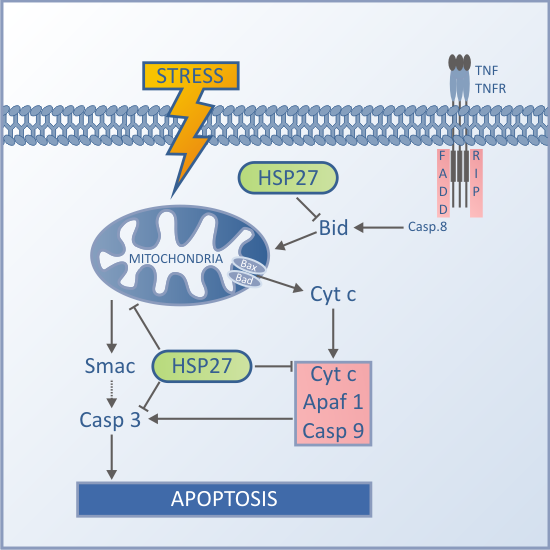| RP101 Inhibition of Chemoresistance and Metastasis |

|

|

|
RP101 is the first small molecule known to bind to the heat shock protein Hsp27 and to modulate its effect.Hsp27 is known to control the following cellular key functions:
Figure: Modulation of apoptotic pathways by Hsp27. At the mitochondrial level, Hsp27, through Bid inhibits the mitochondrial release of pro-apoptotic proteins. At the postmitochondrial level, Hsp27 binds to cytochrome c resulting in the inhibition of apoptosome formation and thereby prevention of caspase activation and apoptosis. Hsp27 can also interact with and inhibit Daxx apoptotic pathway. Interaction of Hsp27 and Pro-caspase-3 has been described as well .
|
|||||||||||||||||||||||||||||



